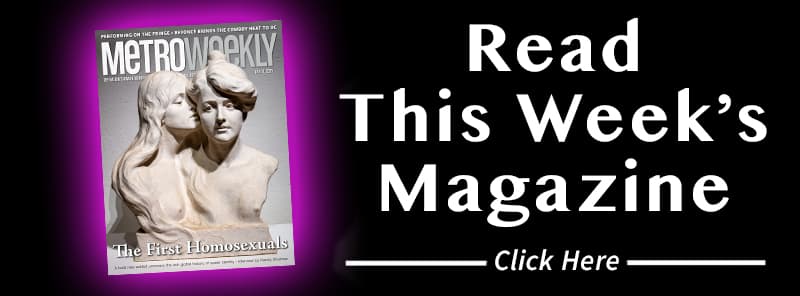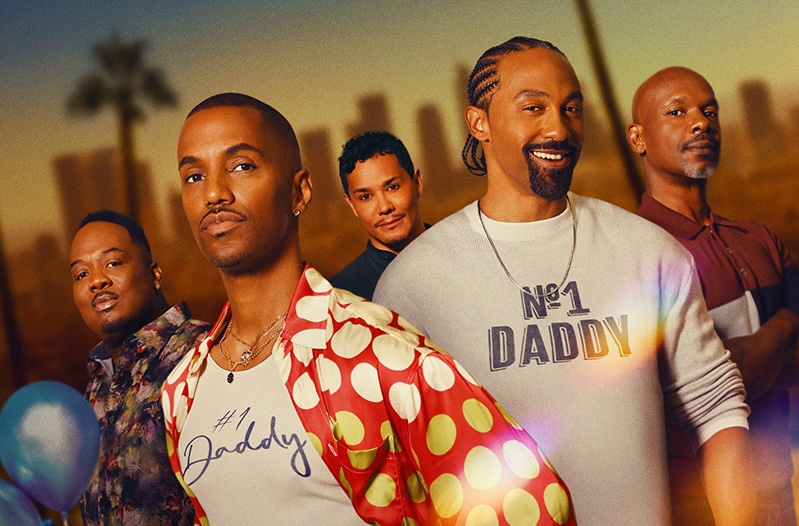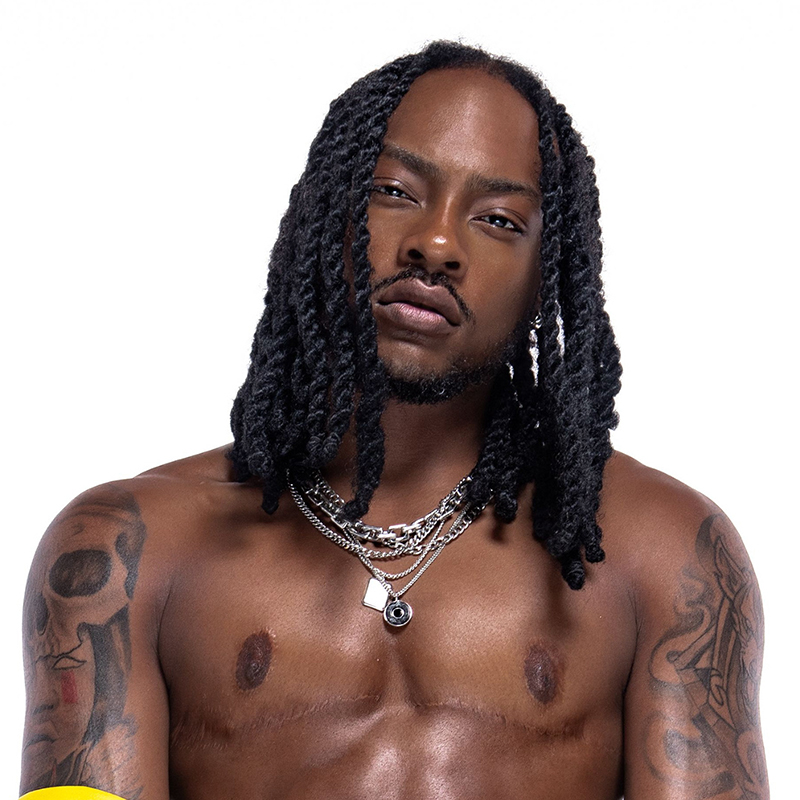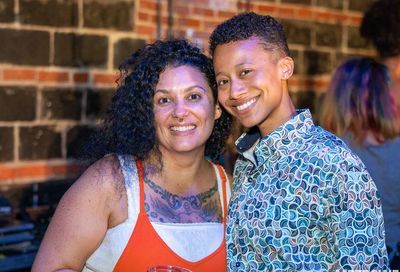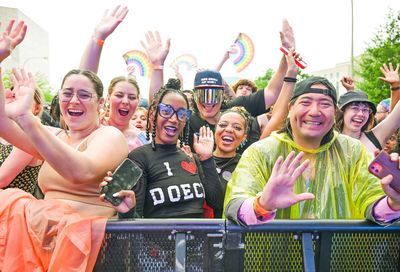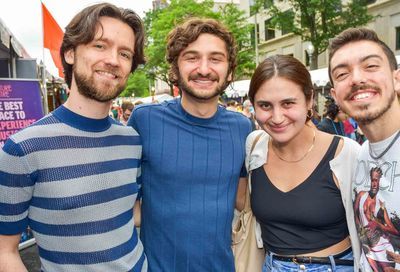Months to Mark the Years
To celebrate black gay history, first you have to find it
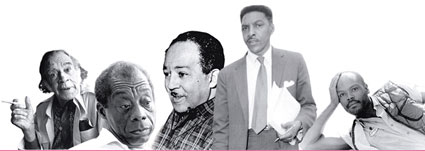
The idea of Black Gay History is about as far out there as is Gay History Month, and the two curiosities are not unrelated.
The first attempt to set aside a time to disseminate information on minorities was Negro History Week, invented by the black and straight historian Carter G. Woodson around 1926. He chose February to honor the births of Abraham Lincoln and Frederick Douglass, and he and his students lectured to clubs and fraternities, sponsored essay contests and published popular textbooks. The impulse to reach a wider audience and instill pride caught on with Women’s History week, and then month, and so now let there be Gay History Month. Why not?
This could mean that queer scholars of color will have more opportunities to teach their lessons, but my fear is that we will have none.
This sort of anxiety was at the heart of the first efforts to construct a black gay history, from Melvin Dixon to Barbara Smith, and dozens of less-known writers. More than 20 years ago, a black gay journalist, Robert Grier, wrote a column for Au Courant, a newspaper that consistently covered Philadelphia’s vibrant black gay life, titled, ”Black History Month? Why Gays Don’t Exist.” He disparaged books that ”communicate to the black straight community that black gays are not/no longer contributors and resultantly expendable.” New York activist Craig Harris was angrier. ”Many consider our history unworthy of scholarly attention,” he wrote in 1986.
Harris went on to describe in detail the contributions of black gays and lesbians, displaying a learnedness that was common, even constitutive of, black gay men of the 1980s. He likened white historians who dabbled in the black gay past to ”the presence of intruders.”
History was the favorite subject of the star high-school student Joseph Beam, who died in 1987, who became a black gay luminary among Philadelphia cultural activists. Everyone who encountered Beam, recalled the depth of his intensity – a carefully controlled rage at invisibility. He wrote dozens of unusually moving essays, mentored artists and writers, and edited In the Life, the first anthology of black gay writings.
On history, Beam wrote about how he had to ”create myself from scratch as a black gay man living in the late-1980s.” He explained that in the 1970s, he enrolled in graduate school in Iowa, and ”spent so much energy in self-observation” that he dropped out of the program. ”I needed to create images by which I, and other black gay men to follow, could live this life.”
Barbara Smith, another visionary of black queer history, came up with a metaphorical salve for the likes of Beam. Smith had attended the New York funeral of James Baldwin in 1987 and described the eulogies to him by America’s most important writers, Amiri Baraka and Toni Morrison, neither of whom mentioned his obvious gayness. It was a remarkable omission because not only had he written queer novels, but came out publicly some five years before at a lecture sponsored by Black and White Men Together. Smith imagined how telling the truth could help black queers ”all over the globe,” and satisfied herself with the prospect of future ceremonies. In a revelation, Smith told us that ”we must always bury our dead twice.”
As an African American and gay historian, I have felt some of this double mourning. Even the most radical or progressive black history textbooks, such as Nell Painter’s Creating Black Americans or Robin Kelley and Earl Lewis’ We Changed The World completely omit any and all mention of homosexuality.
Unlike the moment when Beam and Harris wrote in despair, there is much to read on black gay history. Professional monographs, journals and dissertations abound.
We know that Alain Locke, who joined Howard University as a professor of English and philosophy in 1912, mentored black gay graduate students, and helped to invent the historic movement known as the New Negro.
Richard Bruce Nugent, who died in 1987, has told his story of black gay life to every generation, but his last novel, Gentleman Jigger: A Novel of the Harlem Renaissance, was published only this year, with an introduction by the controversial biographer Arnold Rampersad, who had long refused to acknowledge the gay desires of Langston Hughes. Hughes, like Nugent, lived in Washington before moving to New York.
They were all black, queer and pivotal – without question.
As every historian knows, attitudes and beliefs change in response to larger trends and events. Indeed, looking back at the black community in the 1920s and ’30s, one sees how some of the tolerance gave way to postwar homophobia. Some new scholarship suggests that Martin Luther King Jr.’s civil-rights demonstrations were premised on a demand for strict respectability, not only cleansing the movement of radicals and communists but also what were known as sexual deviates. Yet by the 1970s, many black progressives protested for gay and lesbian rights.
Merely adding gay history to the calendar is not a guarantee for inclusiveness. It is true that in the aftermath of the Stonewall riots, white and black gay men felt radicalized and shared an identification with black people’s historical experiences. If Black was Beautiful, Gay was Good, to borrow Frank Kameny’s phrase.
GLBT history is a relatively new field and feels vulnerable – and black gay history confronts it with difficult stories of racism.
It is a momentous time when the dean of gay history, John D’Emilio, chooses to spend more than a decade to devote to the biography of a black gay man, Bayard Rustin. The fact is, in America, gay worlds have always turned on the question of race – on the construction of whiteness, on racial segregation of leisure, on the performance of stereotypical spectacle. Over the past 20 years or so, countless awards, endowed chairs and learned distinctions have gone to historians who take seriously the mercurial power of race. Yet it is not an exaggeration to argue that gay and lesbian historiography remains one of the whitest fields in the discipline. More celebration under the rainbow flag won’t correct our errant ways.
Kevin Mumford is associate professor of history and African-American studies at the University of Iowa. He is the author of Interzones: Black/White Sex Districts in Chicago and New York in the Early Twentieth Century and of Newark: A History of Race, Rights and Riots in America.
Support Metro Weekly’s Journalism
These are challenging times for news organizations. And yet it’s crucial we stay active and provide vital resources and information to both our local readers and the world. So won’t you please take a moment and consider supporting Metro Weekly with a membership? For as little as $5 a month, you can help ensure Metro Weekly magazine and MetroWeekly.com remain free, viable resources as we provide the best, most diverse, culturally-resonant LGBTQ coverage in both the D.C. region and around the world. Memberships come with exclusive perks and discounts, your own personal digital delivery of each week’s magazine (and an archive), access to our Member's Lounge when it launches this fall, and exclusive members-only items like Metro Weekly Membership Mugs and Tote Bags! Check out all our membership levels here and please join us today!







